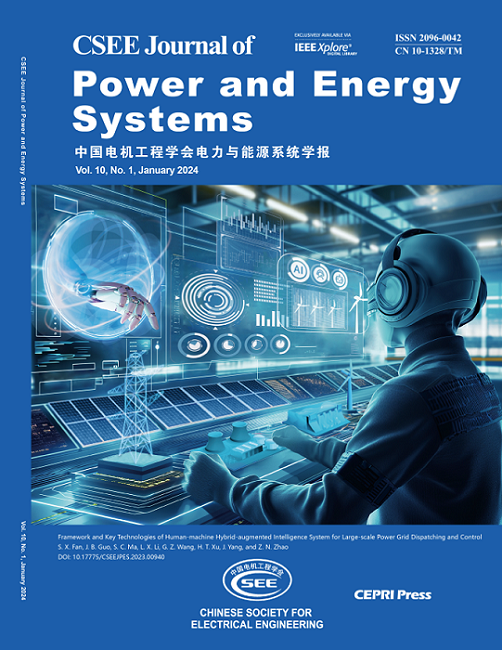利用基于链路传输模型的电动汽车动态交通分配,主动增强电力系统的复原力
IF 5.9
2区 工程技术
Q2 ENERGY & FUELS
引用次数: 0
摘要
电动汽车(EVs)的快速发展加强了电力网络(EPNs)和交通网络(TNs)之间的双向互动,同时也为提高电力系统应对极端事件的能力提供了机会。为了量化电动汽车充电和放电的时间和空间灵活性,提出了一个新的动态交通分配(DTA)问题。DTA 问题基于具有扩展充电链路的链路传输模型 (LTM),描述了电动汽车与电力系统之间的相互作用。它通过能量边界模型将充电率作为连续变量建模。为了考虑 TN 的疏散要求和交通状况的不确定性,DTA 问题被扩展为两阶段分布稳健型版本。进一步将其纳入两阶段分布稳健单位承诺问题,以平衡 EPN 的增强和 TN 的性能。该问题被重新表述为混合整数线性规划问题,并由现成的商用求解器求解。在两个测试网络上进行了案例研究。数值结果验证了该方法的有效性,例如,在不增加未满足流量需求的情况下减少了甩负荷量。本文章由计算机程序翻译,如有差异,请以英文原文为准。
Proactive Resilience Enhancement of Power Systems with Link Transmission Model-Based Dynamic Traffic Assignment Among Electric Vehicles
The rapid development of electric vehicles (EVs) is strengthening the bi-directional interactions between electric power networks (EPNs) and transportation networks (TNs) while providing opportunities to enhance the resilience of power systems towards extreme events. To quantify the temporal and spatial flexibility of EVs for charging and discharging, a novel dynamic traffic assignment (DTA) problem is proposed. The DTA problem is based on a link transmission model (LTM) with extended charging links, depicting the interaction between EVs and power systems. It models the charging rates as continuous variables by an energy boundary model. To consider the evacuation requirements of TNs and the uncertainties of traffic conditions, the DTA problem is extended to a two-stage distributionally robust version. It is further incorporated into a two-stage distributionally robust unit commitment problem to balance the enhancement of EPNs and the performance of TNs. The problem is reformulated into a mixed-integer linear programming problem and solved by off-the-shelf commercial solvers. Case studies are performed on two test networks. The effectiveness is verified by the numerical results, e.g., reducing the load shedding amount without increasing the unmet traffic demand.
求助全文
通过发布文献求助,成功后即可免费获取论文全文。
去求助
来源期刊

CSEE Journal of Power and Energy Systems
Energy-Energy (all)
CiteScore
11.80
自引率
12.70%
发文量
389
审稿时长
26 weeks
期刊介绍:
The CSEE Journal of Power and Energy Systems (JPES) is an international bimonthly journal published by the Chinese Society for Electrical Engineering (CSEE) in collaboration with CEPRI (China Electric Power Research Institute) and IEEE (The Institute of Electrical and Electronics Engineers) Inc. Indexed by SCI, Scopus, INSPEC, CSAD (Chinese Science Abstracts Database), DOAJ, and ProQuest, it serves as a platform for reporting cutting-edge theories, methods, technologies, and applications shaping the development of power systems in energy transition. The journal offers authors an international platform to enhance the reach and impact of their contributions.
 求助内容:
求助内容: 应助结果提醒方式:
应助结果提醒方式:


